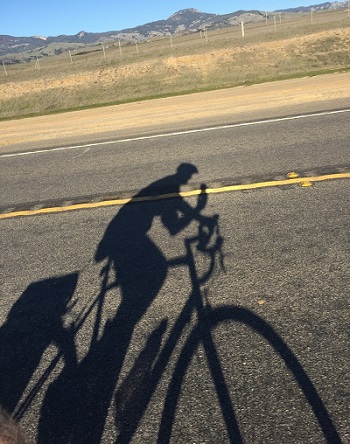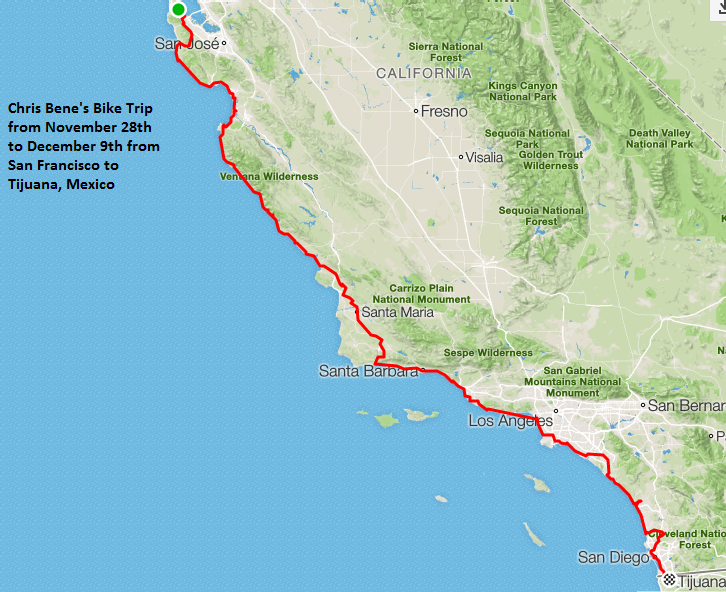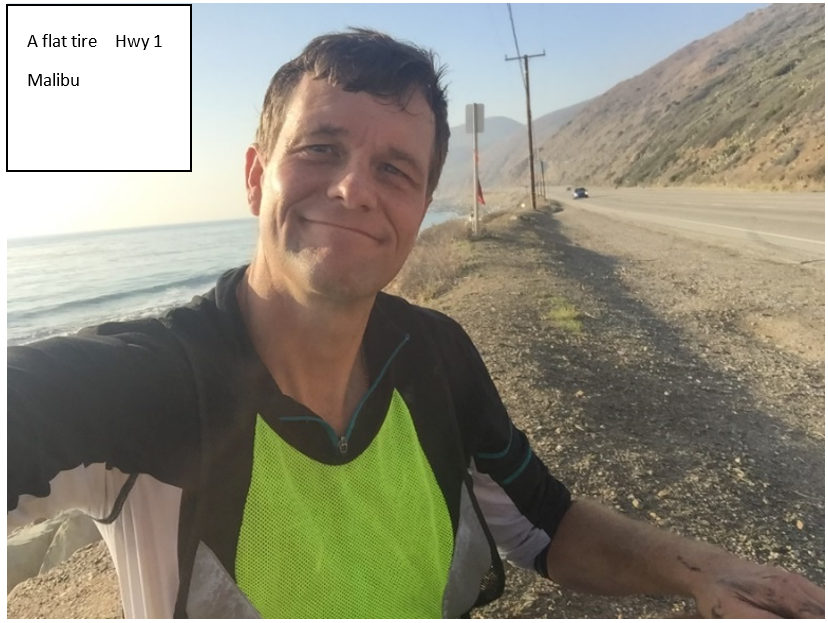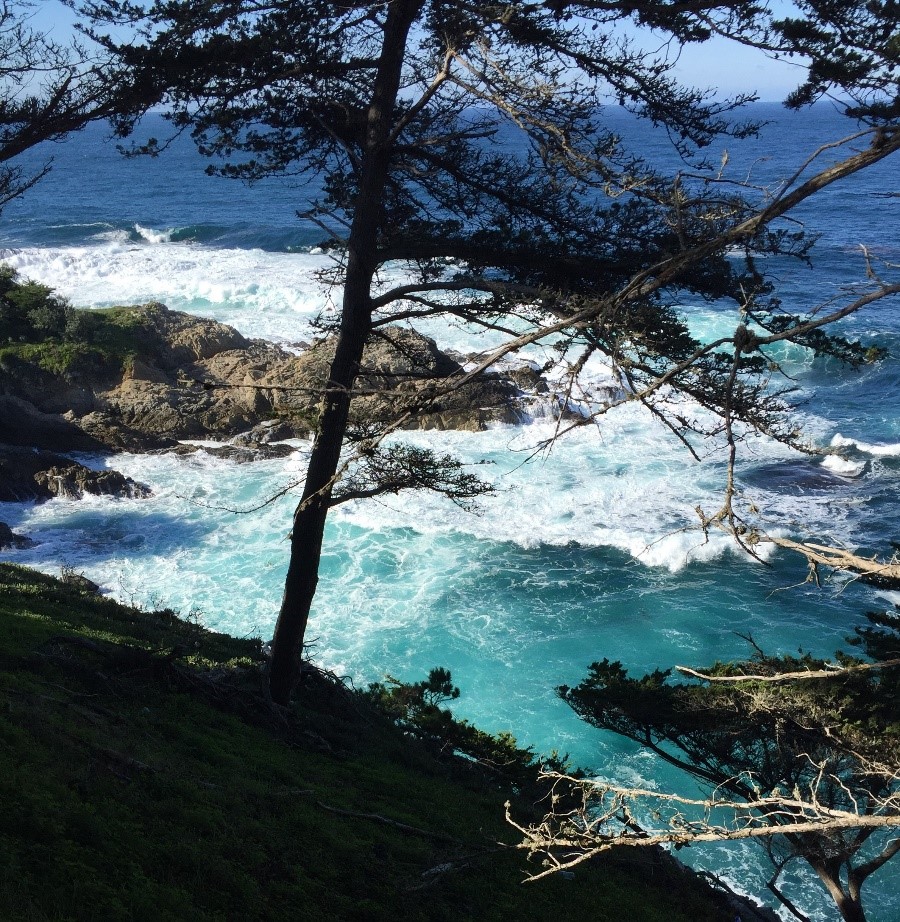Biking 650+ miles from San Francisco to Tijuana, Mexico- in 12 DAYS, Solo and with Type I Diabetes
By Chris Bene
I am not a bike enthusiast or an extreme athlete. I am someone who is ambitious, enjoys challenges, and I have type 1 diabetes.
I live in Connecticut and I had a trip planned to San Francisco for Thanksgiving 2016, to see my daughters who both go to school in California. One day in October, I was having lunch with my sister and she suggested that I do a bike ride from San Francisco to Tijuana. My sister knows me too well and knew that for my mind and for my body, I needed a challenge and I needed a goal.
I also shared this idea with my older daughter. “Nice, but you won’t”, was the response I got from her. What I read between the lines is nice idea Dad, but you can’t and therefore you won’t. My daughter has a good heart and her feelings were valid.
I was not a bike rider per se. I, like most people, learned how to ride a bike as a kid, yet I had not practiced or had been a bike rider of any sort over the past 35 years. I did not bike, “spin”, Pelaton, or Strava. Yet, as a type 1 diabetic for over 24 years, I do my best to stay relatively active; I try to exercise 4-6 times a week, primarily running, anywhere between 30-60 minutes.
I needed to do this. Having spent most my career around the world helping run service businesses or advising firms on growth strategy and performance improvement, I was now actively looking for my next professional challenge and the time was right to try and take on a new and different personal growth experience.
I’ve been fortunate and achieved success with many different “global” professional challenges, but wanted to know what it would be like to take on another completely different challenge. So, like with many of the other previous BIG complex endeavors I experienced in my life, I said: JUST DO IT!
My nature has always been to be optimistic, realistic and never give up. A former CEO always referred to me as “Teflon Chris.” He would say that no matter how tough the environment or situation, I wouldn’t let anything stick to me. Similarly, I was determined to make this happen.
I’m not afraid of the unknown and in actuality it excites me. It also motivates me to prepare, learn by doing, and achieve positive results by using a combination of common sense and determination. I knew that to be successful with my bike adventure, I would not only require mental toughness but also a tremendous amount of physical grit, determination, planning, and stamina.
Another challenge would be my type 1 diabetes. I’ve had type 1 diabetes since 1992—close to 25 years. I learned about it right before attending graduate school. I went for the required physical and (while I was already sweating and urinating like crazy for a few months, and losing weight – the obvious telltale signs of type 1 diabetes) since it was summer in NY, I thought nothing odd about my symptoms. My 840 blood sugar reading told a different story where a normal reading is between 70 and 130.
My reaction to the diagnosis was: “Are you serious? Why me?” In the end, despite what seemed like devastating news, type 1 is not a death sentence. It is a bump in the road that requires me, as well as all other type 1 diabetics, to continuously monitor and measure our blood glucose levels, since our bodies no longer naturally produce insulin. It was a life changing event in my life, but one that I can say has helped me approach all of life’s challenges with a “yes I can” attitude.
On this trip, having a close ability to monitor and ensure normal glucose levels would be critical to my own safety, well-being, and enjoyment. The tremendous amount of physical work day-in and day-out would require me to change my insulin intake dramatically.
Given the obvious danger of the road and traffic to begin with, I did not want to experience any serious “low” blood sugars while riding. Serious low blood sugar results in disorientation, and quite possibly passing-out and worse. Therefore, I checked my blood sugars 3-4x before and during a ride, and then 2-3x afterwards every day. On 10 of the 12 days, I would wake-up with a “low” blood sugar (BS). I learned that even though I reduced my overall insulin intake, my body would still more efficiently burn the sugar in my blood stream. So I would start every day with a bigger than usual breakfast of cliff bars, snickers, eggs, waffles, toast, oatmeal, and yogurt—depending on my location and what was available. I’d then check my BS at noon, and in most cases, my BS number was in the normal range. I kept mini-snicker bars in my shirt pocket and would occasionally have one or two in addition to a lunch just to play it safe.
Yet despite all my planning, it was on day 5 from Deetjen’s Inn, Big Sur to Cambria—probably the most challenging ride from an elevation/ difficulty and mileage perspective—that I experienced a “terrible” blood sugar low. Although I had a big lunch at Ragged Point Inn of a large Cobb salad, bread and some chicken wings, about an hour after the lunch, I experienced an incapacitating “low” along the ocean with a group of elephant sea lions.
I felt like I could no longer control the bike. For some odd reason, it kept veering off to the right side of the road onto the shoulder, into the grass, off the pavement. I told my mind to push the handle bars in the opposite direction, but that also felt unnatural and odd.
Ultimately, I ran into a barbed-wire fence, gashing myself open with a wound across my right forearm, wrist, and shoulder. I sat on the ground, perplexed and confused. I got up, tried to ride some more and then again ran into the side of the road and landed again on the ground in the grass. At this point, I knew I needed to figure out what was going on. I was bleeding badly on the forearm. I checked my blood sugar and it was at 45 (very low). So, I opened my bag and I ate about 6 mini snicker bars and washed it down with some Gatorade. I stayed at the edge of the road for about 30 minutes and then slowly started to get my bearings back. Other than that one very scary situation, in which I was unable to keep control of my bicycle, I managed my type I diabetes well. Afterwards, I learned from the unfortunate “low” episode to continuously feed myself in short intervals.
I took in some breathtaking views on my ride. There is really something to be said about connecting with nature for your soul. Using Google Maps bike route was great for keeping me on the right path and directing me on “bike” friendly roadways. I also met some interesting people on my ride. I stayed at hostels, Inn’s and Airbnb’s. I highly recommend doing this once in your life, to meet a diversity of people. Hostels really allow and encourage social interaction, which is great if you are traveling by yourself.
Even though I tried to prepare for every scenario, you can never be truly prepared.
 In the face of adversity, I persevered and focused. Overall, I experienced 5 flat tires, 3 broken spokes, highway traffic, battery on phone dying (no google maps/directions), missed roads/turns, early darkness, and low blood sugars. The most important thing when facing obstacles is the ability to laugh at yourself and to not take yourself too seriously. Just as I did on this ride: work hard, be optimistic, focus on results, and keep finding new ways to grow and learn. I accomplished all these feats and more on my California solo bike adventure.
In the face of adversity, I persevered and focused. Overall, I experienced 5 flat tires, 3 broken spokes, highway traffic, battery on phone dying (no google maps/directions), missed roads/turns, early darkness, and low blood sugars. The most important thing when facing obstacles is the ability to laugh at yourself and to not take yourself too seriously. Just as I did on this ride: work hard, be optimistic, focus on results, and keep finding new ways to grow and learn. I accomplished all these feats and more on my California solo bike adventure.
Chris Bene is the proud father of JDRF Bay Area Development Assistant Sarah Bene. They have shared their experience of living with T1D since Sarah was diagnosed ten years ago.


